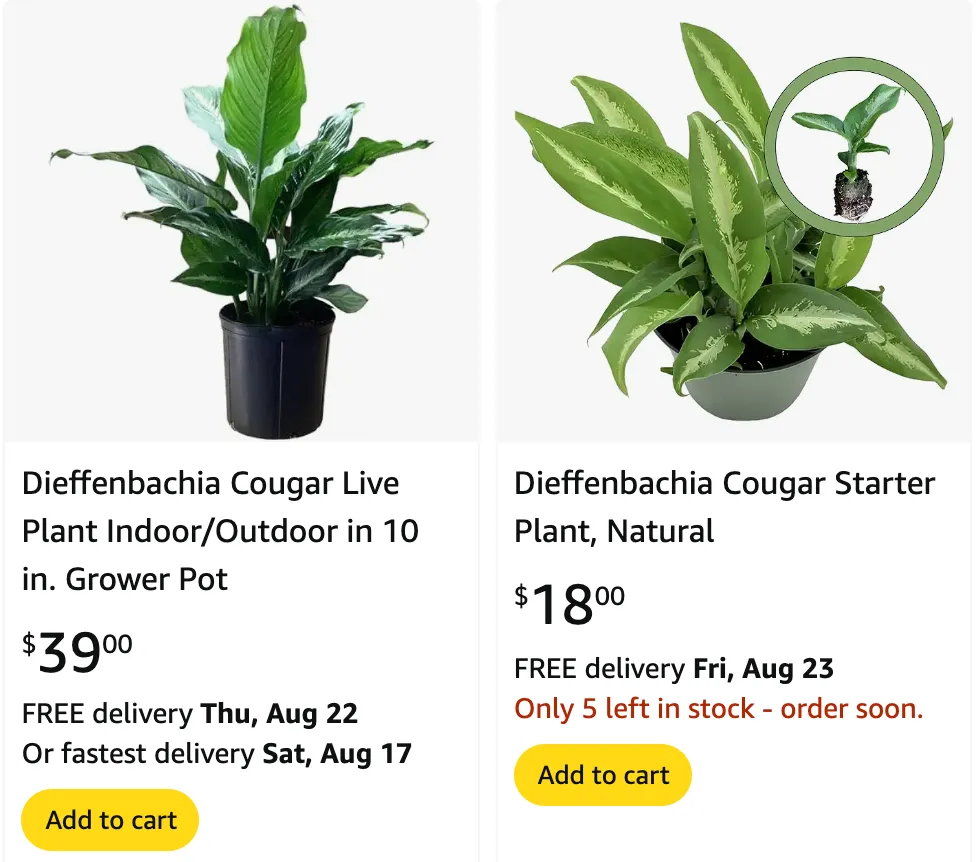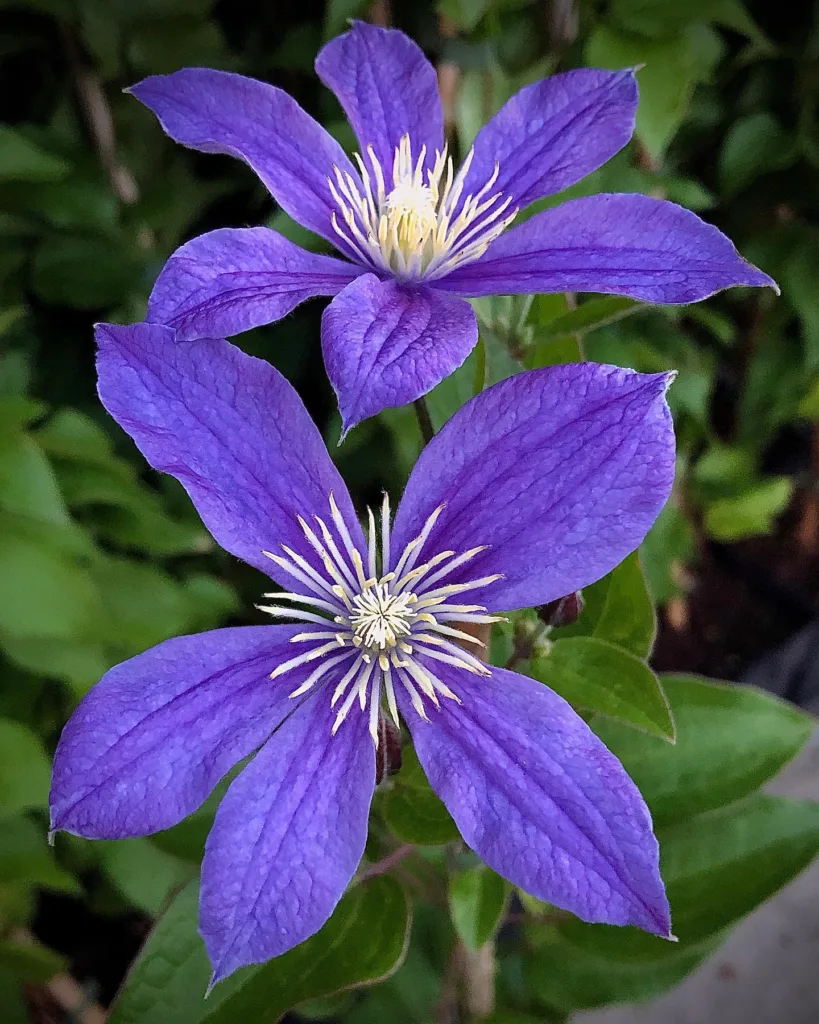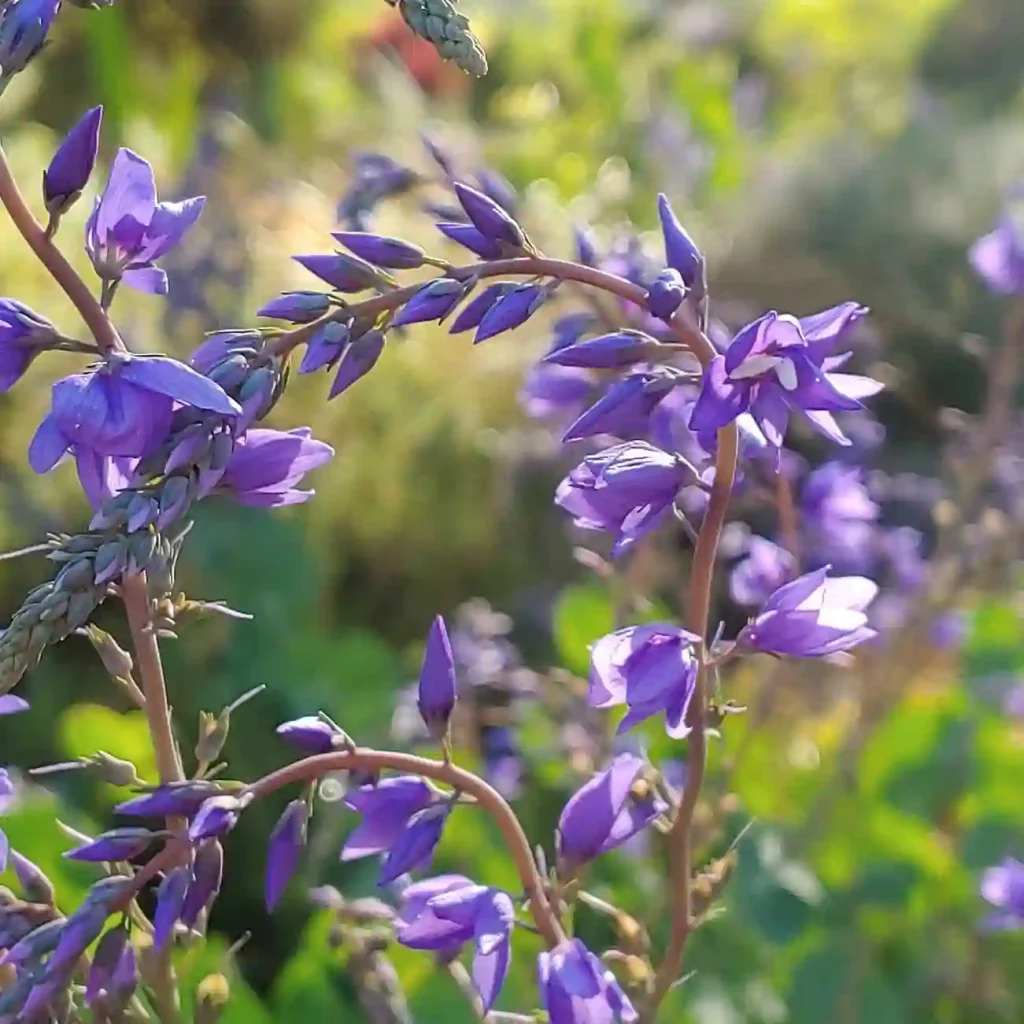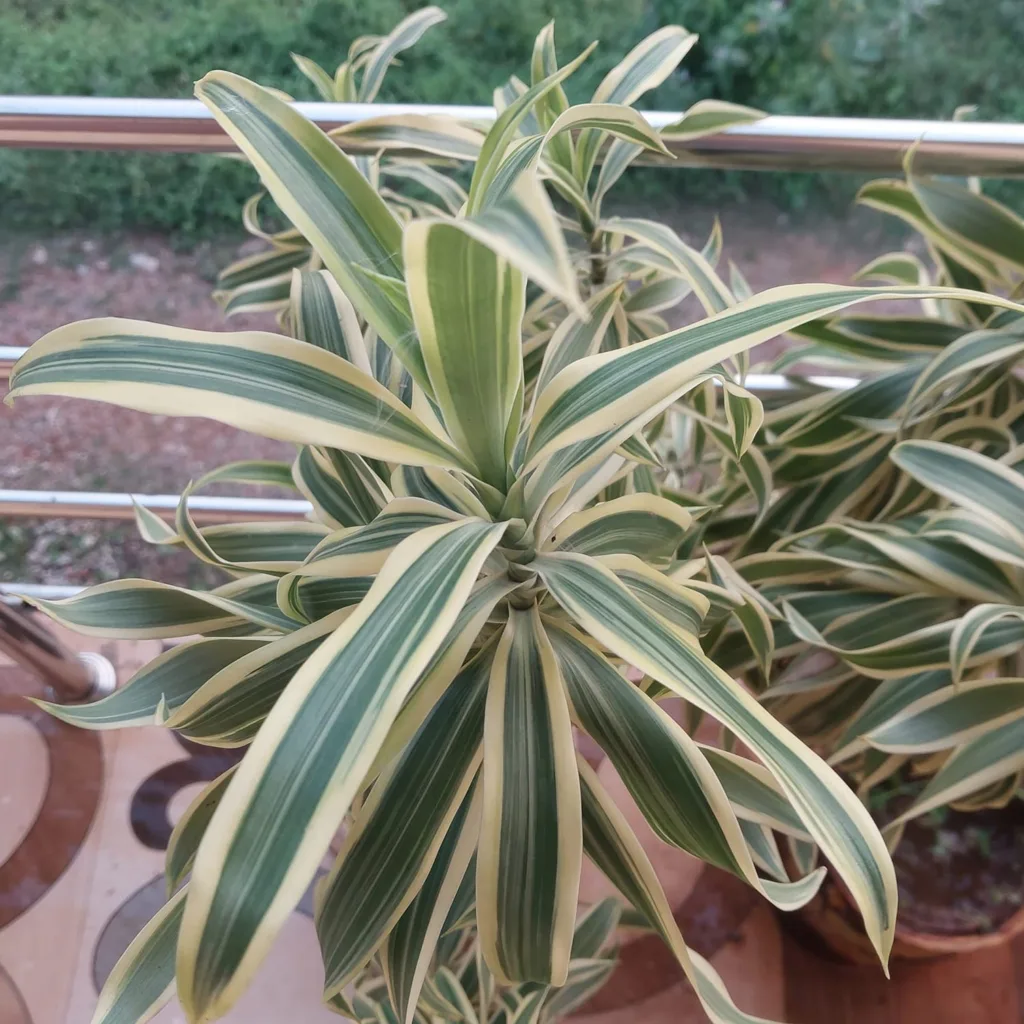
FAQs About Dieffenbachia Cougar
Dieffenbachia Cougar is a striking and hardy houseplant that’s caught my eye over the years. With its large, variegated leaves in shades of green and cream, this plant not only adds beauty to my space but is also easy to care for. If you’re like me and love low-maintenance plants that make a bold statement, this might be a perfect choice. I’ve had my Dieffenbachia Cougar for some time now, and here are some frequently asked questions I’ve encountered along the way.
60 Species in Genus Dieffenbachia
What is Dieffenbachia Cougar?
Dieffenbachia Cougar, a member of the Dieffenbachia family, is known for its broad, lush leaves that are beautifully variegated with a mix of green and creamy yellow. It’s a tropical perennial that originates from South America. The plant can grow up to 3 to 5 feet indoors, which makes it a great floor plant. It’s a perfect statement piece in my living room, bringing a touch of the tropics indoors.
This plant is also known for being relatively easy to care for, which is one reason I love it. However, it’s essential to note that all parts of Dieffenbachia Cougar are toxic if ingested. If you have pets or small children, take precautions and keep the plant out of reach.
How to Care for Dieffenbachia Cougar?
In my experience, Dieffenbachia Cougar thrives with the right balance of light, water, and humidity. Here’s how I care for mine:
Light Requirements
Dieffenbachia Cougar prefers bright, indirect light. I’ve found that placing it near a north or east-facing window works well. Too much direct sunlight can scorch its leaves, while too little light may cause the variegation to fade. I try to rotate the plant every couple of weeks to ensure even growth.
Watering Schedule
One of the things I’ve learned is that Dieffenbachia Cougar likes its soil to be kept consistently moist but not soggy. I water mine once the top inch of soil feels dry to the touch, which is usually every 7-10 days. Overwatering can lead to root rot, so I make sure the pot has good drainage and I never let the plant sit in water.
Humidity and Temperature
As a tropical plant, Dieffenbachia Cougar enjoys higher humidity levels. I keep mine in a room with a humidifier or occasionally mist its leaves. It does well in temperatures between 65-75°F, which is perfect for most indoor environments. Cold drafts can be harmful, so I ensure it’s not near an air conditioner or an open window during the colder months.
Fertilization
I’ve found that feeding my Dieffenbachia Cougar with a balanced, water-soluble fertilizer every 4-6 weeks during the growing season (spring and summer) helps it stay vibrant and healthy. I ease off the feeding in fall and winter when the plant’s growth slows down.
How to Propagate Dieffenbachia Cougar?
Propagating Dieffenbachia Cougar is a straightforward process that I’ve had success with using stem cuttings. Here’s how I do it:
- Take a Healthy Cutting: I use a clean, sharp knife or scissors to cut a 4-6 inch stem with at least one node (where the leaves meet the stem).
- Rooting in Water or Soil: I prefer to root my cuttings in water, as it allows me to watch the roots develop. I place the cutting in a jar of water, making sure the node is submerged. After a few weeks, roots will begin to form. Once they are about an inch long, I transfer the cutting to a pot with soil. Alternatively, you can plant the cutting directly into soil, but be sure to keep the soil moist until roots develop.
- Provide Proper Care: After transferring to soil, I care for the new plant as I would an established Dieffenbachia Cougar.
What to Plant with Dieffenbachia Cougar?
When it comes to companion plants, I like to pair my Dieffenbachia Cougar with other plants that thrive in similar conditions. Here are a few that work well:
- Snake Plant (Sansevieria): This is a great choice because it can tolerate a wide range of light conditions and doesn’t require frequent watering, just like Dieffenbachia Cougar.
- Philodendron: These plants share similar care requirements, and their vining nature adds a nice contrast to the upright growth of Dieffenbachia Cougar.
- Peace Lily: With its similar light and humidity needs, the Peace Lily pairs well with Dieffenbachia Cougar, and its white blooms complement the variegated leaves.
Common Problems and Solutions
Like any plant, Dieffenbachia Cougar can face a few challenges. Here’s how I’ve tackled some common issues:
- Yellowing Leaves: This is often a sign of overwatering. I check the soil moisture and adjust my watering schedule if necessary. It’s important to ensure the plant is not sitting in water.
- Drooping Leaves: If the leaves are drooping, it could mean the plant is thirsty. I water it thoroughly and ensure it’s not exposed to cold drafts.
- Pests: I occasionally check for pests like spider mites or aphids. If I notice any, I treat the plant with insecticidal soap or neem oil, ensuring to cover all parts of the plant.
How to Repot Dieffenbachia Cougar?
Repotting is something I do every 2-3 years, usually in the spring. I choose a pot that’s one size larger than the current one and make sure it has good drainage. Here’s my process:
- Remove the Plant: I gently remove the Dieffenbachia Cougar from its pot, being careful not to damage the roots.
- Loosen the Roots: If the plant is root-bound, I gently loosen the roots before placing it in the new pot.
- Add Fresh Soil: I fill the new pot with fresh, well-draining potting mix and place the plant in, ensuring it’s at the same depth as before.
- Water Thoroughly: After repotting, I water the plant thoroughly and let it settle in its new home.
Dieffenbachia Cougar is a rewarding plant that brings lush, tropical beauty to any indoor space. With the right care, it thrives and grows, making it a stunning focal point in any room. Whether you’re a seasoned plant enthusiast or a beginner, this plant is sure to add charm and vibrancy to your collection.




